Issue 4, June 1, 2021
Brood X Periodical Cicadas
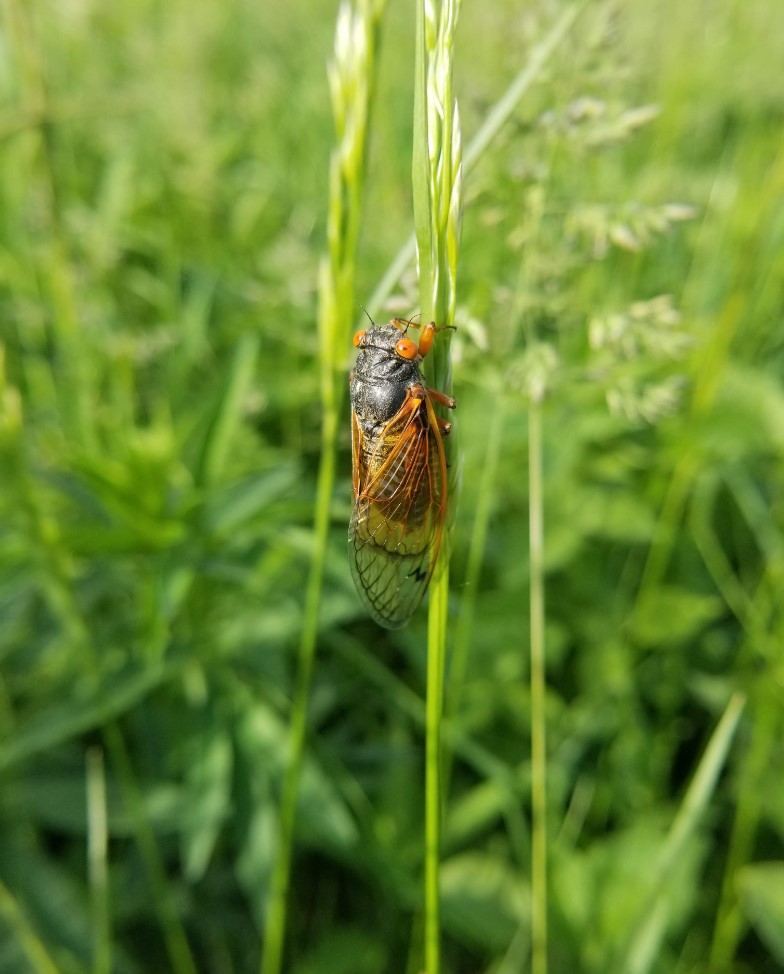
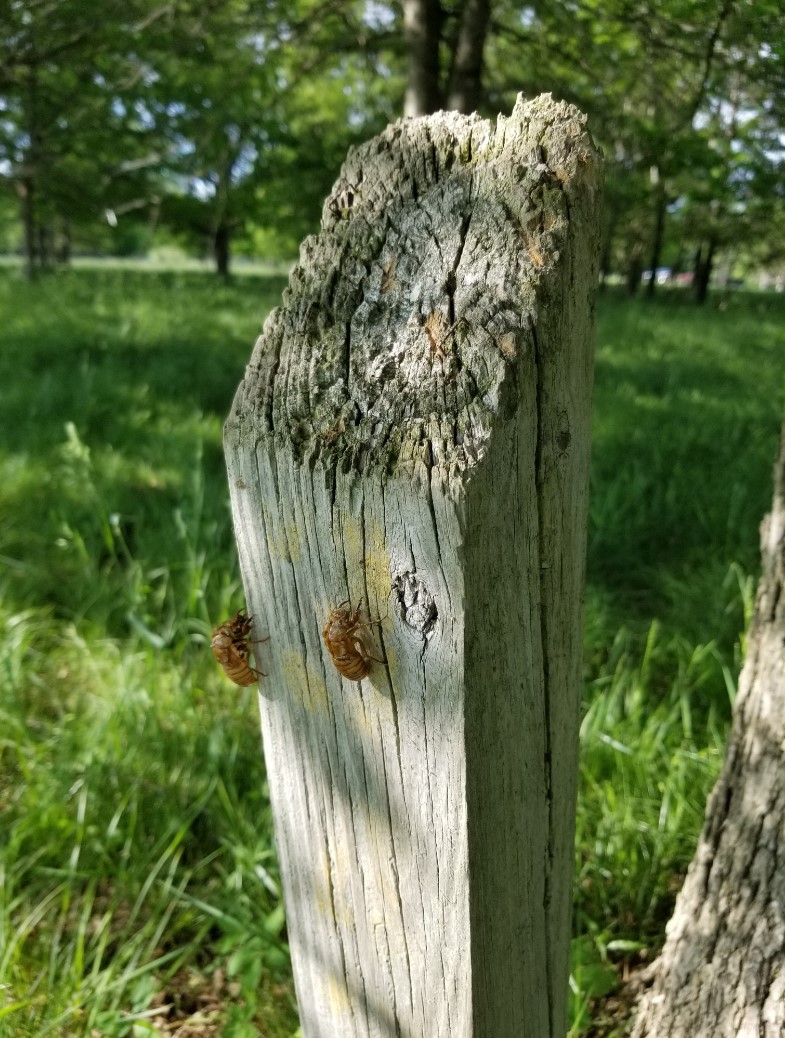
Left: Magicicada sp. adult on tall grass, Sarah Hughson, University of Illinois at Urbana-Champaign
Right: Magicicada sp. nymph molts on post, Sarah Hughson, University of Illinois at Urbana-Champaign
Brood X periodical cicadas (Magicicada spp.) are emerging now in Edgar, Clark, Crawford and Vermillion counties and will continue to emerge until late-June. This year we can see two species of periodical cicadas, the pharaoh cicada (Magicicada septendecim) and Cassini 17-year cicada (Magicicada cassinii). These species can be differentiated by both their size and markings. The pharaoh cicada is the larger of the two and has thick orange stripes across the underside of its abdomen. The Cassini 17-year cicada is much smaller and the underside of its abdomen is all black.
A periodical cicada emergence can be an exciting event to witness! This is a great time to visit a local state or city park and watch the adult cicadas fly, listen to their calls and look for the nymphs’ shed skins. In neighborhoods with mature trees, some may even find cicadas in their back yards. You can even take part in a citizen science project by reporting cicada sighting locations on the Cicada Safari app.
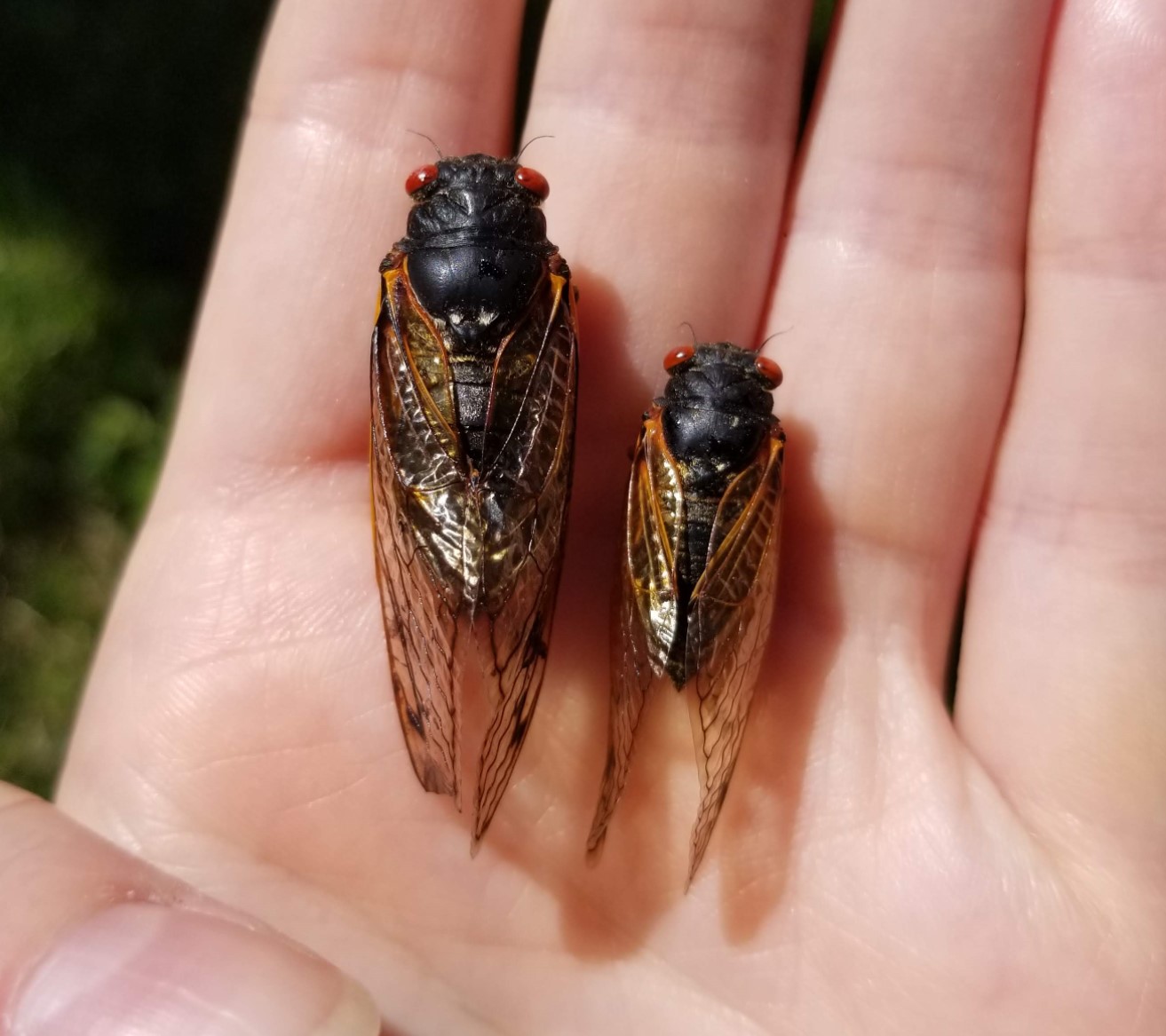
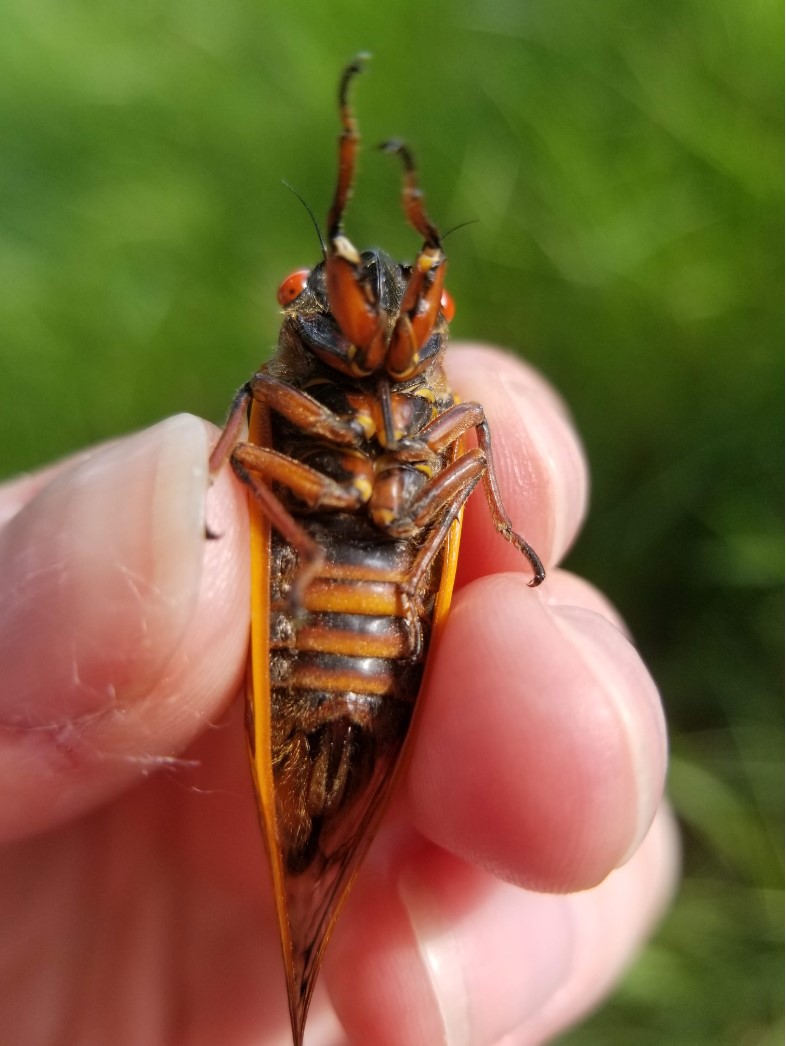

Left: Magicicada septendecim on the left and Magicicada cassinii on the right, Sarah Hughson, University of Illinois at Urbana-Champaign
Center: Magicicada septendecim female with striped abdomen, Sarah Hughson, University of Illinois at Urbana-Champaign
Right: Magicicada cassinii male with black abdomen, Sarah Hughson, University of Illinois at Urbana-Champaign
Cicada biology
Cicada nymphs live below ground for most of their lives, sucking fluids from tree roots and go unnoticed until they emerge. When the emergence begins, cicada nymphs leave the soil, climb a few feet up a tree or shrub and molt to their adult stage, leaving their shed skin behind. Adult cicadas usually remain near their molting site to allow their bodies time to harden, before moving farther up the tree. As adults, periodical cicadas feed very little, devoting their time to reproduction. Adult males will call to females with a shrill buzzing song. In areas with low populations of cicadas, the calls can be a nice summer chorus, but in areas with heavy populations, some may find the calling quite loud.
Injury to trees and shrubs
After mating, female cicadas use their ovipositor, an egg-laying structure, to cut small openings and deposit eggs into twigs and branches. They may repeat this several times on a given twig, resulting in scars several inches long. Leaves growing beyond the scarring site may die and twigs may break easily. Cicada damage does not impact well-established healthy trees, and is usually only an issue in small, recently planted, trees. Female cicadas prefer to deposit eggs in twigs and branches that are 1/4 to 1-1/2 inches in diameter but they may also deposit eggs in the trunks of small transplanted fruit or ornamental trees. so these trees may be good candidates for protection.
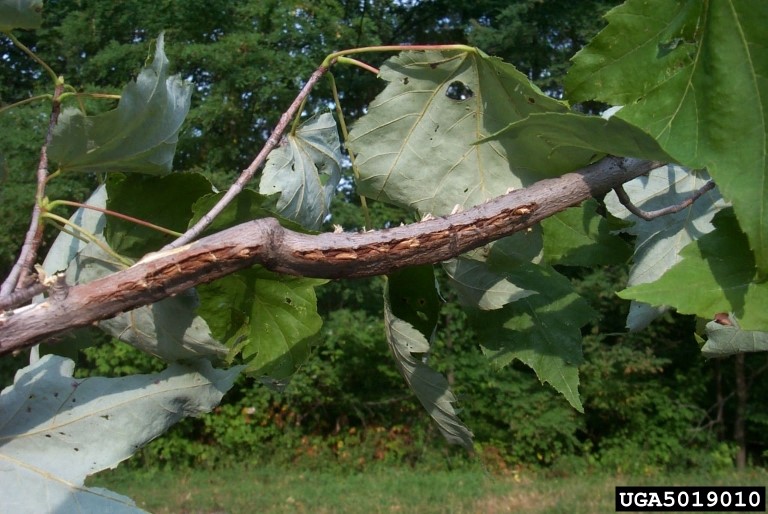

Left: Periodical cicada (Magicicada sp.) damage, Pennsylvania Department of Conservation and Natural Resources - Forestry , Bugwood.org
Right: Periodical cicada (Magicicada sp.) damage prevention, James B. Hanson, USDA Forest Service, Bugwood.org
Protecting trees and shrubs
Since a periodical cicada emergence is a rare occurrence and the cicadas are an important part of their ecosystems, we recommend that preventative action only be taken when trees are too small to withstand injury or where injury would have an economic impact (ex. orchards). The best way to protect small trees from damage in areas with heavy cicada populations is to surround the trunks with screening to prevent egg-laying. Waiting to plant small trees or choosing larger trees, at least 2-1/2 inches in diameter can help avoid egg-laying. For small fruit trees, some may choose to cover the trees in mesh no larger than 1/4 inch while the cicadas are active to avoid egg-laying. Orchardists may choose to prune in the 4-6 weeks after egg-laying to remove eggs and reduce the number of cicadas in the next emergence, but this is not recommended in other contexts.
There are no pesticides labelled for use on cicadas. Research has found that pesticide applications did not reduce the amount of egg-laying or injury to the plants. It is also important to remember that your local wildlife, including birds, mammals and reptiles, will be feasting on cicadas throughout the emergence. Choosing a cultural control or making the decision to tolerate some injury can prevent local wildlife from consuming pesticides along with their meal.
Most areas do not see heavy populations of periodical cicadas and do not require tree protection. Periodical cicadas require 17 years continuously feeding on the same tree roots to complete a single generation, so areas where trees were removed or areas that were previously farmland or prairie, may see very few if any periodical cicadas.
Author:
Sarah Hughson